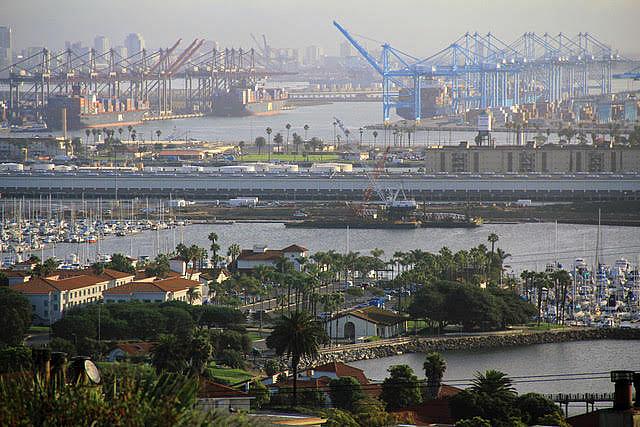New generation of air-quality monitors offer better data on how air pollution is harming health

New gadgets may offer important applications for people living in highly polluted areas, such as the “Cancer Alley” communities hugging the twin ports of Los Angeles and Long Beach.
To stay healthy, we monitor our body weight by counting calories, and track our activity with devices such as FitBit that mathematically analyze our movement.
But we’re largely helpless when it comes to the air we breathe — even when it’s full of invisible health-destroying industrial particles that can travel deep inside lungs and into the bloodstream, where they can reach the heart and other organs.
The more active someone is, the more vulnerable they are to airborne acids, metals, smog and smoke. And this pollution is most harmful to fetuses and developing infants.
But since we don't know what’s in our air, we can’t make personal or local connections between pollution and the ailments connected to exposure — cancer, respiratory damage, heart attacks, underdeveloped organs in children, and decreased brain function.
Technology to the rescue?
We’ve been largely dependent on government agencies and industrial polluters to tell us what's in our air on a regional level.
But now technology companies are offering up new solutions.
Personal air-quality monitors can be purchased online for $100 and more. The technology is made possible by a new generation of affordable nanoelectronics that can produce tiny, affordable environmental sensors. Perhaps more importantly, those sensors can also now automatically transfer the complex, hard-to-understand data they gather directly to smartphone applications that can organize and map it.
For example, here are some marketing pitches for these devices:
“If worried about the air conditions around your or your children, just take a look at the Footbot. Coloured LED lights will show you instantly what your air quality is like.”
“Do you know what's in the air you're breathing? Truth is, indoor air can be 5x more polluted than outside, affecting allergies, asthma, eczema, sleep, and much more. Awair tracks toxins in your air and gives you recommendations to help you keep it clean and safe. Awair gives you the knowledge you need to improve your indoor environment and take control.”
While not all models on the market are equally useful, some have already proven to deliver reliable data.
Applications for L.A.’s 'Cancer Alley'
These new gadgets may offer important applications for people living in highly polluted areas, such as the “Cancer Alley” communities hugging the twin ports of Los Angeles and Long Beach, which emit 100 tons of smog a day.
Regulatory air monitoring is currently done regionally. State testing doesn't take place in several communities around the ports — including Wilmington, San Pedro and Carson. Those communities rely on mathematical models to estimate their pollution exposure from an air monitor located miles away in Long Beach.
For my 2017 California Data Fellowship project, I will purchase several personal air- quality monitors and distribute them to residents living in the area around the ports, Carson, Paramount, and other communities beset by high pollution levels in the footprint of the Southern California News Group.
My goal with this project is to simply shed some light on how individuals are affected by air pollution.
I'll gather data from monitors that measure ozone and particulate matter (the deadliest of the air-based pollutants) to identify where and when people are most vulnerable. Ideally, the information will lead to actionable results that can help people understand ways to reduce their exposure.
[Photo by Green Fire Productions via Flickr.]

